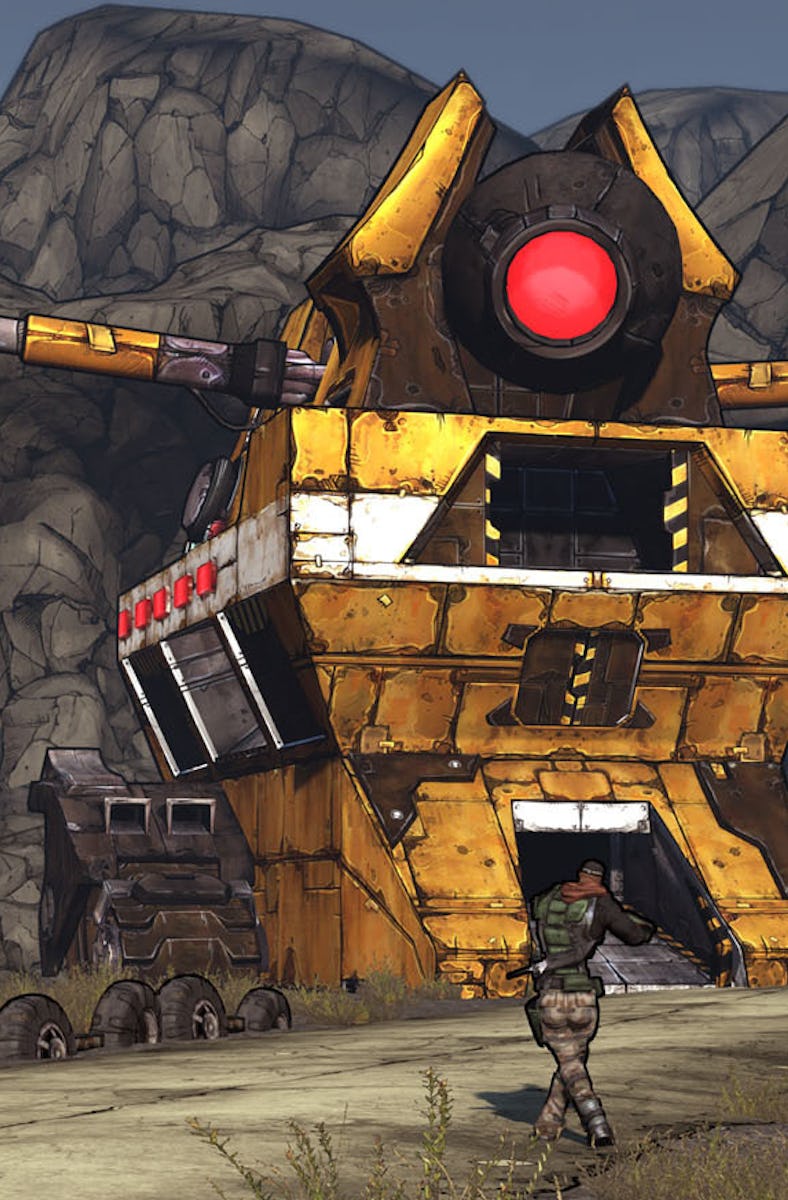15 Years Ago, Borderlands Nearly Shipped With a Fatal Flaw
Planet Pandora changed everything. No, the other one.

It’s wild that in 2009 there were two science-fictional planets called “Pandora.” Each of these Pandoras redefined the mediums in which they existed, too. In the world of sci-fi cinema, James Cameron’s Avatar revealed his vision of the planet Pandora, but, in the realm of video games, developer Gearbox Software sent Vault Hunters to an entirely different Pandora; the world of Borderlands. While the recent box office flop of the film version of Borderlands might make non-fans think this franchise is silly, the truth is, for gamers, Borderlands was not only extremely innovative but a very healthy shift in the genre of shooters.
Fifteen years after Borderlands was released for PlayStation 3 and Xbox on October 20, 2009, it remains a unique and well-crafted game, mainly because it combined two gaming genres into one unforgettable experience.
A new kind of shooter
Inspired by a grab bag of post-apocalyptic science fiction worlds, Borderlands puts the player in the role of one of four characters Brick, Lilith, Mordecai, and Roland. Each character has unique skills and making these selections is not unlike choosing different species in Dungeon & Dragons. This customization isn’t unique to the game, but the stark differences between the choices automatically created the best aspect of Borderlands — that this was as much a roleplaying game as it was a shooter-looter game.
The world and aesthetics of Borderlands are nasty and grungy in a Mad Max-ish sort of way, which is interesting since that franchise hadn’t actually rebooted back in 2009. From a science fiction perspective, the world-building of Borderlands actually felt uniquely throwback for the time, but also paradoxically, ahead of the curve. The basic message of the game, is fairly anti-capitalist, insofar as the primary enemy that players face is the the Atlas Corporation. Like a twisted version of Hitchhiker’s Guide to the Galaxy, there’s a cynical prediction here that corporations will rule other planets in the future, and that the only way to fight back is to become one of the semi-lawless fighters of the game.
Calling Borderlands a subtle game would misrepresent its almost punk rock appeal, and yet, the fact that the game doesn’t just rely on fighting and shooting to move its story forward is what makes it so playable, fifteen years later. We all like to talk about side quests in gaming, but Borderlands, arguably, perfected the art of side quests. The game isn’t a true open-world concept, but the various side quests make it feel just larger enough for you to go off the larger story grid for a while.
This facet of Borderlands was, and is still, essential to its success. Great games have to have limits and rules, otherwise, there’s nothing at stake. But, what makes roleplaying games appealing to fans of science fiction and fantasy, is the idea of roaming around in a strange world, picking up clues and equipment, and figuring out your own approach to your quest. Complete democracy in roleplaying probably isn’t achievable, or desirable, but what Borderlands did was create a veneer of autonomy within reasonable limits.
Borderlands’ last-minute art change
One piece of concept art for Borderlands, prior to the art design change.
The real reason that Borderlands made its mark is a last-minute behind-the-scenes shift in its art style. At the time, games like Fallout had some similarities in gameplay, something that concerned, Gearbox especially given the fact that the first take on the art style for Borderlands was retrofuturistic, very much in the style of Fallout 3. And so, as Brian Martel, Aaron Thibault, and Mikey Neumann revealed in 2010, the art and style of the game were completely altered late in the process.
The now-familiar art style featured some hand-drawn animation, as well as cel-shaded animation, which was more in line with the style of comic books. This shift was essential. Because, once this happened, Borderlands moved away from intentionally more realistic game-play, and into something a bit more surreal.
This decision was internally controversial, though it’s very hard to imagine the Borderlands franchise with a different look and feel. In the end, the slightly over-the-top art style fused well with the fact that the game was a mash-up of different gaming styles. There were rules and limits on what you could do in the original Borderlands, but the brilliance of the first game was that it made you feel like it was coloring outside of the lines — in every possible way.